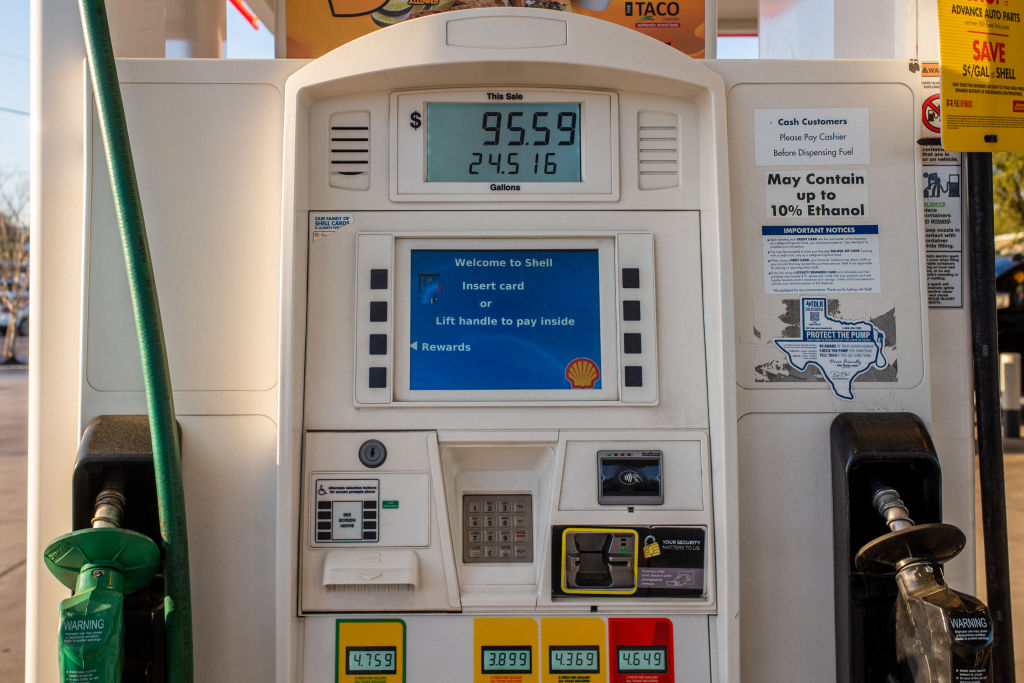The national average price for gas has passed $5, shattering previous record prices, fuel savings company Gasbuddy announced Thursday.
In addition to the unprecedented national price noted in a Gasbuddy news release Thursday, regional data from the company showed motorists in California, Nevada, Arizona, Oregon, and Washington state will have to pay some of the nation’s highest gas prices.
Arizona has the lowest average price of these states, with gasoline selling for about $5.287 per gallon. California, on the other hand, has the highest at approximately $6.391 per gallon, according to Gasbuddy data.
The American Automobile Association recorded a national average slightly lower than Gasbuddy’s, with $4.970 per gallon Thursday.
Nonetheless, like data from Gasbuddy, AAA data showed that the states struck the hardest by the gas price hike were those on the West Coast, Arizona, Illinois, Indiana, and Michigan.
The AAA records the average gas price in California at approximately $6.403 per gallon and the average gas price in Arizona at about $5.264.
“It’s been one kink after another this year, and worst of all, demand doesn’t seem to be responding to the surge in gas prices, meaning there is a high probability that prices could go even higher in the weeks ahead,” Gasbuddy lead petroleum analyst Patrick De Haan said, according to the company’s news release.
[firefly_embed]
[/firefly_embed]
Multiple factors are at play behind the rising gas prices. With countries recovering from COVID-19 and seeking to restore their production capabilities, the demand for crude has increased globally, outpacing supply.
The war in Ukraine has added to this crisis, with Western sanctions restricting Russian crude oil from the global market.
Likewise, sanctions on Iran and Venezuela, two other major oil producers, have limited their role.
Besides the Biden administration’s hostility to fossil fuel development in the U.S., a domestic factor contributing to the price hike has been the decline of U.S. refining capacity, which fell by 1 million barrels per day during the last three years of the pandemic, according to Gasbuddy analysts. The nation’s refining capacity has not caught up with growing local demand.
“It’s a perfect storm of factors all aligning to create a rare environment of rapid price hikes. The situation could become even worse should there be any unexpected issues at the nation’s refineries or a major hurricane that impacts oil production or refineries this summer,” DeHaan said in the news release.
With the midterm elections around the corner, the gas prices, coupled with the ongoing record-high inflation facing the country, are creating a political danger zone Democrats on Capitol Hill up for reelection, and President Joe Biden’s White House.
Republicans have long criticized Biden’s approach to the rising gas prices, pointing out that the nation’s 46th president has not satisfactorily addressed local production.
The gas prices and the record-high inflation have come at a cost to Biden’s popularity ratings, which have been spiraling downward since his disastrous 2021 withdrawal of U.S. troops from Afghanistan.
According to data from Five Thirty-Eight, Biden’s unpopularity currently stands at 53.5 percent as of Thursday, far outpacing his popularity rating of 40.2 percent.
This article appeared originally on The Western Journal.

























 Continue with Google
Continue with Google